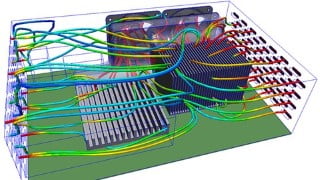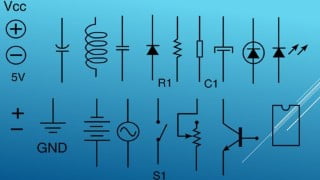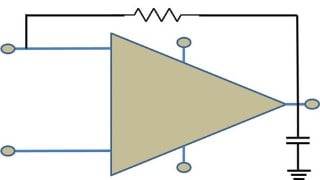Advanced Materials In Electronics Packaging
Learn about advanced materials used in electronics packaging and thermal management. Explore various packaging configurations, substrate materials, and the role of thermal management in electronics products. Gain in-depth knowledge on FR4 boards, ceramic substrates, GELVET TIM technology, metal matrix composites, carbon nanotubes, phase change materials, and EMI shielding. This course is ideal for power electronics and material science students, as well as those dealing with thermal management in electronics and electric products. A comprehensive resource file is provided for further understanding.
What you’ll learn
- Need for electronics packaging
- Different ICs packaging configurations
- 3 Packaging variations
- Difference between various “FR” boards
- Various Substrate materials
- Materials used to form “Electronics Glass” & application of “Electronics Glass”
- Various Ceramic Substrate materials that are currently being used and its technical details
- Advanced “TIM” material : “GELVET”
- Various metal matrix composites (MMCS) : Al-Diamond / AlSi / ASiC / Cu-Diamond / Al-Graphite
- Role of Diamond
- Carbon nanotubes (CNT) & its types : SWCNT / MWCNT
- Applications of “CNTS”
- Advanced materials used to form “PCM” – Phase Change Materials
- Materials used for EMI (Electro-Magnetic Interference) shielding
Show moreShow less
Disclaimer : Please view the videos in HD mode (high pixel resolution) for more clearance .
In this world of fast growing electronics technology & miniaturization process, thousands of new portable and light weight electronics products are launched in the market each day and in various fields of electronics such as – consumer electronics , medical electronics , communication electronics , defence electronics , industrial electronics and in aerospace electronics . Due to complex circuit design & miniaturization , excessive amount of heat dissipation is happening in electronics products which is reducing the life-span of the components/devices .Thus thermal management of all electronics products has become an important issue . In this role of thermal management, “electronics packaging” plays a very important part .
Here in this short course you will study in detail about the “advanced materials used in electronics packaging” & “thermal management materials‘ that has been developed over the recent years.
What you will learn in this course ???????
What is electronics packaging
Why we need electronics packaging
6 Hierarchy in electronics packaging
3 Packaging variations
7 different types of packaging configurations & their applications
Different types of substrate materials
What is so great about FR4 board
Difference between FR1/2/3 & FR4 board properties
Materials used to form electronic glass substrate and application of electronic glass
In-depth knowledge on ceramic substrate materials
GELVET TIM technology
Metal matrix composite (MMCS) materials : Al-Si , Al-SiC ,Cu-Diamond , Al-Diamond , Gold-Gold Interconnections (GGI) & Al-Graphite composite
Technical details on Carbon Nano Tube (CNTS)
PCM materials
Electro-magnetic-interference (EMI) shielding materials
At the end of this course , a RESOURCE File is provided which will help you a lot in further understanding of the topics given in this course .
Who this course is for:
- Power Electronics Students
- Material Science Students
- Students dealing with thermal management of electronics / electric products
User Reviews
Be the first to review “Advanced Materials In Electronics Packaging”
You must be logged in to post a review.







There are no reviews yet.